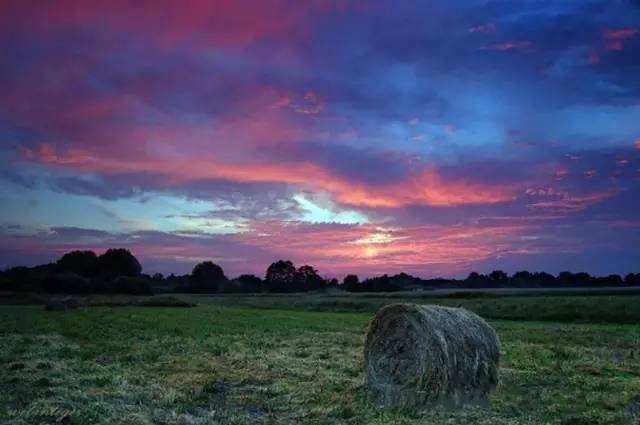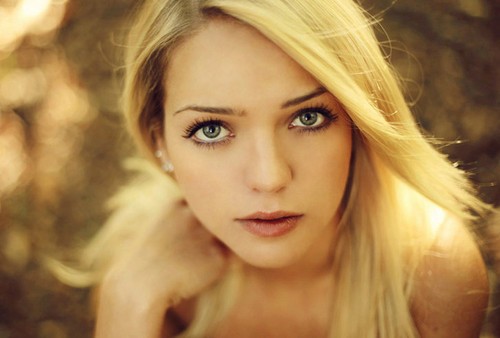Table of Contents
Brief Introduction
Photography enthusiasts often encounter such a situation: a real scene feels very vivid to the naked eye, and the visual effect is also good. But when it is taken into a photo, it is not so good-looking, and even becomes bland and disdainful.
Appreciation of works with visual impact effects-1
This gap between the photo and the real always makes people feel confused and frustrated, and it also casts a gray shadow on his creative enthusiasm. Where is the sticking point? The human eye is a wonderful sense. Due to the existence of binocular stereo vision, people can distinguish the distance and three-dimensional composition of objects, and photos transfer the three-dimensional information in the plane, so it is naturally more expressive than the real scene. Missing a sense of stereo.
Based on the defects of the transmission medium itself, we must focus on creating the advantage of plane, that is, to create a photo with a strong plane visual effect. This is what we often say about improving the visual impact of photography as much as possible.
Appreciation of works with visual impact effects-2.
1. The Choice of Photographic Vision
Not all scenes in the world are suitable for photography. Photographers should improve their “eyesight”, observe the scene with photographic vision, and make choices about the subject.
The essence of photographic vision is an ability of imagination and judgment. Because photographic imaging and human eyes are similar in many aspects, people mistakenly believe that photographic vision is human eye vision, and the result is bound to cause the picture effect to be far from the actual feeling.
For example, people’s visual perception of a scene is often not a single one, and is also affected by the comprehensive environment of the scene, such as smell, touch, hearing and so on. When these sensations are pleasing, it enhances the aesthetics of the vision. Conversely, when these sensations are impacted and people are disgusted, the visual effect will also be weakened.
The photographic vision is single, it has no hearing, smell, touch and so on. Therefore, before shooting a moving scene, the photographer should suppress various senses other than vision, observe the scene with photographic vision alone, and see how much of the scene can be recorded and expressed by the camera. If the photographic vision is still meaningful in all the senses, then the scene is worth photographing, otherwise it should be abandoned. This is an important prerequisite for improving the visual impact of the work.
Appreciation of works with visual impact effects-3.
2. The Choice of Exaggeration
Photography is a form of artistic expression with documentary characteristics. Photographers can use certain artistic expression techniques to enhance the visual effect of their works without violating the basic characteristics of photographic documentary, among which the “exaggeration” technique is the most common and practical.
For example, in order to enhance the atmosphere of the picture and the effect of tone, color filters can be used to enhance the attractiveness of the photographed scene. For example, when shooting a snow scene, add a blue filter to emphasize the depth and coldness of the snow scene. Shoot the sunrise using a red filter to highlight the vigor of the rising sun. Shoot blue sky and white clouds, use polarizers to increase the contrast between blue and white, etc.
For another example, in order to make a part of the scene stand out, a close-up or a large close-up can be used. Use the incomplete picture image to express the complete theme, so that the photographic picture changes from complicated to concise, from rough to delicate.
For another example, in order to increase the expressiveness of the work, a short focal length lens can be used to facilitate the shooting of large scenes at close range. Shooting with a short focal length lens often gives people an unusual sense of novelty due to the change in the perspective relationship of the picture. This method is now mostly used for news scene shooting with special significance.
Appreciation of works with visual impact effects-4.
3. Selection of Composition Position
The visual effect of the work is inseparable from the composition and position chosen by the photographer. It mainly includes three aspects: distance, direction and height.
shooting distance
The shooting distance is the distance between the shooting point and the scene being shot. The difference in the shooting distance will bring about changes in the scene of the picture, resulting in changes in the composition. For example, if you choose to shoot from a distance, the range of the subject to be photographed is wide and far-reaching, and it is good at expressing the momentum of the scene. Choose panorama shooting, the scope of the subject is smaller than the distant view, and it is good at expressing the whole picture of the main subject and the characteristics of the environment in which it is located.
If you choose to shoot in a medium shot, the scope of the subject is relatively narrow. It is good at expressing the relationship between people, people and things, and things and things, and wins by plot. The choice of close-up shooting is to highlight the main part and main appearance of the subject, and is good at making delicate depictions of the demeanor of the person or the main appearance of the scene.
Appreciation of works with visual impact effects-5.
Shooting direction
Orientation means that the shooting point is on the front, back, or side of the subject. Frontal shooting means that the camera is facing the front of the subject. This direction is conducive to expressing the frontal image of the subject. It is good at expressing symmetrical beauty and can produce a sense of solemnity, majesty and tranquility. Side shot, including left and right oblique side, is the most used direction in photography. When shooting, the horizontal line of the subject itself will become a convergence line with strong perspective effect on the screen, which helps to express the three-dimensional and spatial sense of the scene. The picture is also easy to appear vivid, which is also conducive to highlighting the subject.
Appreciation of works with visual impact effects-6.
Shooting height
The height is the horizontal height of the camera parallel to or higher or lower than the subject, namely “flat shot”, “upward shot” or “overhead shot”.
Flat shooting helps the audience to have an immersive visual experience of the picture, and also helps the subject to block more background characters or scenes on the screen, so that the subject is more prominent.
Shooting upside-down helps to emphasize and exaggerate the height of the subject, helps exaggerate the upward leap of the jumping body, and helps to express the high and upward spiritual outlook of the characters. It can also set off the subject scene in the sky to the greatest extent, so that the picture has a kind of unrestrained feeling.
The biggest feature of overhead shooting is that the front and rear scenes can be fully displayed on the screen. Helps to emphasize the number of subjects, the grand scene. It is helpful to explain the geographical location of scenery and characters. It helps the picture to produce rich scene layers and a far-reaching sense of space. And also helps to show the beauty of lines of the earth.
Appreciation of works with visual impact effects-7.
4. Selection of Color Configuration
To attract people’s attention to photography, it is not the more colors the better. But the choice of the color configuration around the prominent subject. Using color to highlight the subject mainly relies on the contrast effect of color to achieve the purpose of highlighting the subject in the contrast of colors, thereby improving the visual impact of the work.
Appreciation of works with visual impact effects-8.
(1) Choose a contrast between cool and warm colors
Cool and warm colors are corresponding colors on the color wheel. Arrange them together, it is easy to produce a sense of visual beating and form a strong contrast effect. The photographer can process the subject and the background environment into different cool and warm tones. So as to obtain the prominence of the subject.
Appreciation of works with visual impact effects-9.
(2) Choose complementary color contrast
Complementary colors are positioned opposite on the color wheel and have a strong contrasting effect. Complementary or near-complementary colors are arranged in a work at the same time. This will make the picture have the characteristics of color contrast and leave a deep impression on the audience’s vision.
Appreciation of works with visual impact effects-10.
(3) Choose a bright and dark contrast of colors
Due to the difference in saturation between various colors, there are bright and dark differences. Colors with high saturation appear vivid, and colors with low saturation appear dull. If the bright colors and dark colors are configured together, the bright colors can further enhance its gorgeous feeling. If there are some brighter colors in a darker color background, these colors will stand out. The photographer can take advantage of this principle to make the subject have a higher saturation. The brighter colors, the less saturated and darker background colors, can make the subject stand out. 
Appreciation of works with visual impact effects-11.
In short, there are many ways to improve the visual impact of photographic works. And photography enthusiasts should master and use them to make their works more eye-catching and touching.
